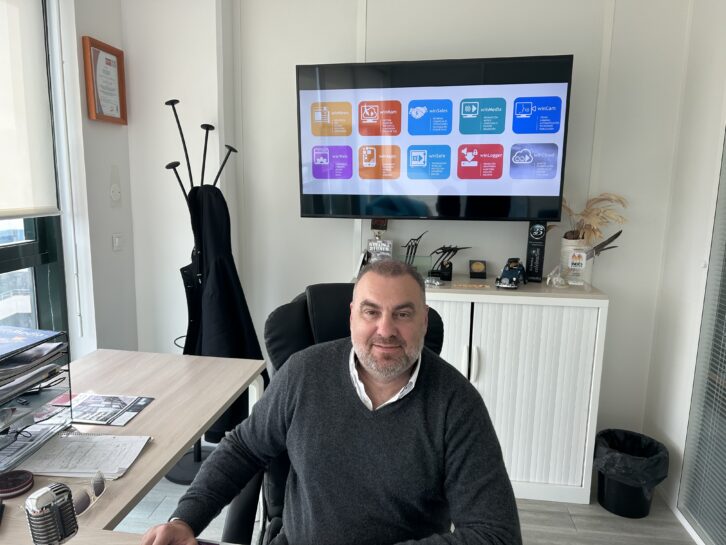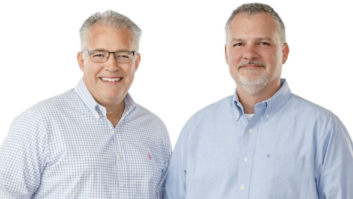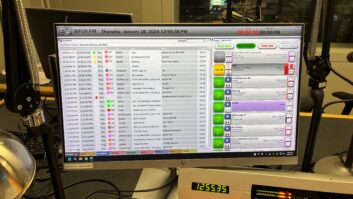A current Radio World ebook explores the trend toward more and more broadcast tools now being provided “as a service.”
Stephane Tesoriere is president and founder of WinMedia. His development of playout and broadcast software beginning in 1995 grew from a passion for music and radio in high school, and his subsequent experience working in radio and TV.

Radio World: How are service models showing up from your company?
Stephane Tesoriere: Sensing the trend in user preferences for broadcast software products, Win-Group Software already offers multiple SaaS products. These are dedicated to newsroom operations, customer relation management with booking, media asset management for the production and transmission of radio or TV programs, but also to the easy creation and management of your own website or mobile application.
Using just a browser, users can securely access and use the winMam, winNews, winSales, winWeb or winApps applications. In addition, our well-known winMedia Software suite offers winCloud, which provides the same tools as on-premise, and WinSafe, which allows you to back up and still broadcast in case a disaster occurs with your on-premise system.
RW: What are the business implications of choosing to pay for something on an op-ex basis?
Tesoriere: You eliminate the need for a considerable initial investment in high-performance IT equipment, and you eliminate security concerns or operating costs inherent in an on-premises operation — like energy consumption, human resources for maintenance and a long payback period.
This allows many more users the possibility of starting a broadcast activity much faster and under high-quality conditions. And all that for very affordable monthly cost.
Apart from the initial smaller financial outlay, I would also highlight two extraordinarily important aspects: first, the elimination of the need for hardware upgrades generated by software developments; and second, the user has access to the latest product versions. This avoids creating a technology gap that inevitably would lead to limitations and a decrease in quality.
Not to mention the support services included.
RW: What new capabilities have recently become available “as a service”? Are you seeing this model in other aspects of the air chain?
Tesoriere: Incredible as it may seem, all areas of a station’s business now are available as a service. WinMedia Software provides all the products a station needs for content ingest and management, production and editing, sales and marketing, newsroom, scheduling and planning, program production and broadcasting, distribution to operators.
The service model has been present in our lives for a long time, but it was perceived by the public through the notion of subscriptions. With the advent of software products offered as a service and the effort of these manufacturers to popularize the concept, perceptions have changed, increasing demand but also raising the bar and refining demand. Those who were simply offering rental of goods have realigned themselves by adding what was missing for consumers.
RW: What questions should a technology buyer keep in mind?
Tesoriere: I would say the most important is security, closely followed by redundancy level.
RW: What issues should be addressed with a service level agreement?
Tesoriere: The SLA has to describe in detail the terms you agreed for the services you will receive. You should pay close attention to parameters that are directly related to the desired outcome of your activity, and ask for a realistic level of responsiveness and performance.
I say “realistic” to avoid an increase in costs generated by an oversized SLA request.
RW: With hardware, it’s yours forever. What happens when software is no longer updated?
Tesoriere: Given the pace at which operating systems are advancing to keep up with requirements — particularly, but not only, for security — a software product that is not upgraded soon will become unusable or, at best, will end up being used in a closed environment running on obsolete hardware with an increasing probability of failure.
RW: With centralized service, is there sufficient redundancy across geographically distinct data centers?
Tesoriere: Even if a product offers centralized services, that doesn’t mean it can’t have a level of redundancy.
In the case of our products, and depending on demand, we offer redundancy by replicating services in Tier 3+ data centers in Switzerland, France, Singapore and Canada, allowing automatic service switching in case of need.












